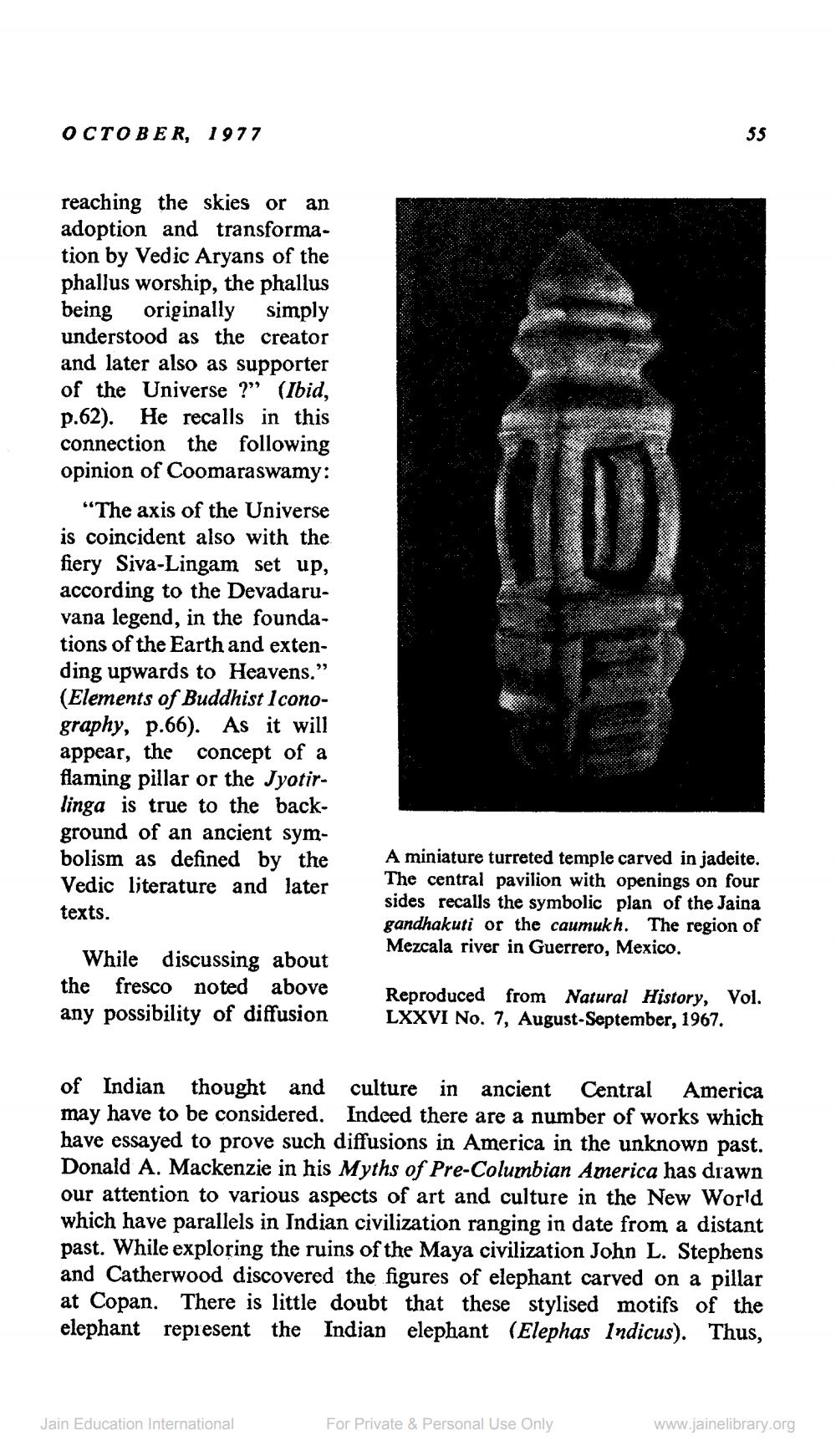________________
OCTOBER, 1977
55
reaching the skies or an adoption and transformation by Vedic Aryans of the phallus worship, the phallus being originally simply understood as the creator and later also as supporter of the Universe ?” (Ibid, p.62). He recalls in this connection the following opinion of Coomaraswamy:
"The axis of the Universe is coincident also with the fiery Siva-Lingam set up, according to the Devadaruvana legend, in the foundations of the Earth and extending upwards to Heavens." (Elements of Buddhist Iconography, p.66). As it will appear, the concept of a flaming pillar or the Jyotirlinga is true to the background of an ancient symbolism as defined by the Vedic literature and later texts.
A miniature turreted temple carved in jadeite. The central pavilion with openings on four sides recalls the symbolic plan of the Jaina gandhakuti or the caumukh. The region of Mezcala river in Guerrero, Mexico.
While discussing about the fresco noted above any possibility of diffusion
Reproduced from Natural History, Vol. LXXVI No. 7, August-September, 1967.
of Indian thought and culture in ancient Central America may have to be considered. Indeed there are a number of works which have essayed to prove such diffusions in America in the unknown past. Donald A. Mackenzie in his Myths of Pre-Columbian America has drawn our attention to various aspects of art and culture in the New World which have parallels in Indian civilization ranging in date from a distant past. While exploring the ruins of the Maya civilization John L. Stephens and Catherwood discovered the figures of elephant carved on a pillar at Copan. There is little doubt that these stylised motifs of the elephant represent the Indian elephant (Elephas Indicus). Thus,
Jain Education International
For Private & Personal Use Only
www.jainelibrary.org




